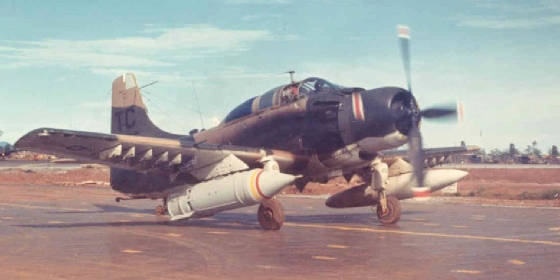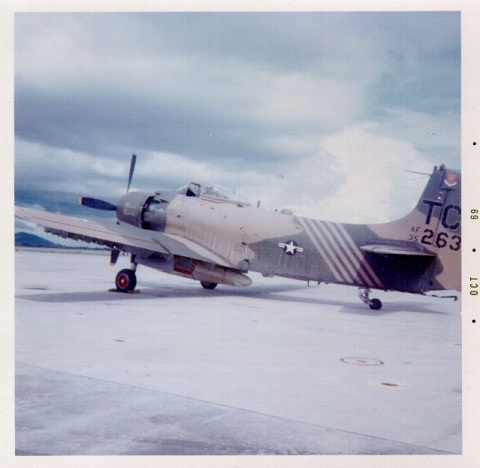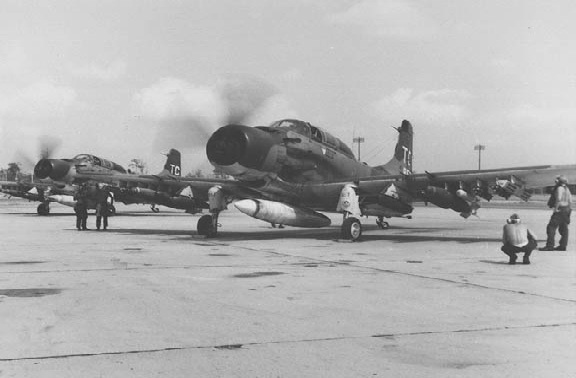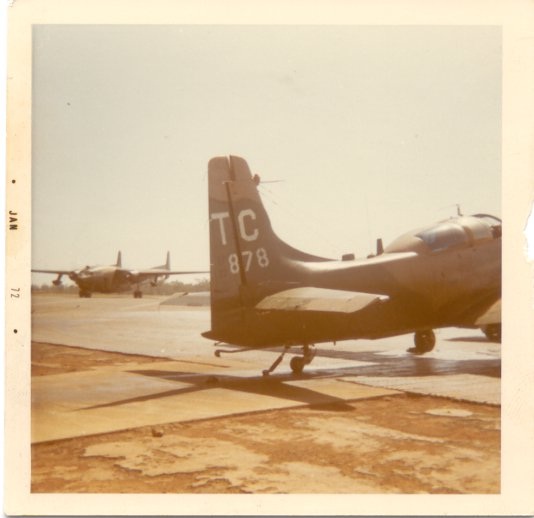
| Home | Return With Honor | Where Are You? | History of Isan | November 1962 | Det Prov.3 PARC | 56th Air Commando Wing | Communist Thai | The Zorros | 1st SOS | SOG MACV MLT 3 | 21st Special Operations Sq | 21st SOS Over The Fence | 21st SOS Pictures Page | Squadron VO-67 U.S.N. | 23rd TASS | 23rd TASS - Steel Tiger | Reports From The Trail | 23rd TASS Cricket Lament | 606th Special Operations Squadron | 606th - Over The Fence | Long Tieng - Alternate 20A | Alternate 20A Today | 119K Stinger Gunship | 56th Security Police Sq | 56th Security Police II | 6994 Security Squadron | Arrival: My First Day | The Gift | PCS: My Last Day | Son Tay Raid | 456th MMS | Back to The Jungle | NKP Map | Thare | Thare II | Operation Tailwind | Red Horse | NKP Pictures Page | NKP Pictures 1 | NKP Pictures 2 | NKP Pictures 3 | NKP Pictures 4 | NKP Pictures 5 | NKP Pics 6 | NKP Pics 7 | Favorite Links | Personal Web Site | |||||||||||
|
Nakhon Phanom During The Secret War 1962-1975 |
|||||||||||
|
1st SOS |
|||||||||||
|
|
|||||||||||
|
It was March of 1971; I’d been in the Air Force for
3 years, 8 months. (Only 4 more months to go.) But I had volunteered for any assignment in Thailand to get out of SAC and
North Carolina. I was a Staff Sergeant (E-5). My Air Force specialty code
(AFSC) was 43151 A (recip. engine aircraft-more than one engine) and 43151 E (jet engine aircraft). That meant that I was
an aircraft general mechanic (431X1), fully trained (5 level), capable of working on multi-engine propeller driven (A) or
jet engine (E) planes. Now I was working for the 1st SOS. The First Special Operations
Squadron. What was our special operation? We were prepared to help anyone who needed help in Viet Nam, Laos and Cambodia.
We suspect that A-1s had seen south China from 10,000 feet, also. We had 29 assigned A-1 type aircraft; all that was left of
3,180 Navy and Marine AD carrier aircraft. The Douglas AD aircraft was built to replace a previous Douglas aircraft, the SBD
Dauntless torpedo dive-bomber. The Douglas AD first flew on March 18, 1945. So when I reported in some of them might have
been 26 years old. Navy and Marine ADs cut their teeth in the Korean conflict,
from ship and land bases. French ADs cut their teeth killing Arabs in Algeria, one of the few lessons that the American military
remembered. When the Navy retired and/or replaced their aging ADs with
those new jets, the Able Dogs were put in storage or sold to other countries’ Air Forces or Navies around the world. Soon after Viet Nam started, the Air Force decided that the
old dog would again make a fine, low-level, close air support, fighter/bomber. It was slow enough for pinpoint gunnery in
narrow Asian mountain valleys. It could carry more that its own empty weight in armament. More than a B-17 actually. The aircraft
could stay on station for 10 hours and more, depending on weapons and fuel tank configuration. To a ground troop, an A-1 was the first plane to call for
when he was pinned down. The few old A-1, AC-47 and AC-119 prop aircraft did more for trapped Army and other infantry than
several squadrons of F-4s, F-100, F-105s or F-5s. Jets just flew too fast for the narrow and twisty valleys
in mountainous Viet Nam, Laos or Cambodia. They weren’t half as accurate as the slow and low A-1. The jets on-station
(loiter) time was severely limited, especially when they had to use afterburner all the time to pull up and away sharply at
the end of a narrow valley. They couldn’t carry as much payload, proportionally as the A-1 (no aircraft could). It is
true that they could be refueled in flight by KC-135s and return, but in the meantime, the Army might have been overrun. Best of all, from this mechanic’s viewpoint, the A-1
Skyraider was the only plane I ever crewed that come back for days in a row with no pilot write ups except a very flattering
(to me) "OK flight" notation in the aircraft log book.
The only tools any A-1 mechanic ever carried with him was
his big, long screwdriver. Of course post flights required a full tool box for the fix phase. But for launches, pre-flights
and thru flights, a screwdriver could open all panels, service caps, was used to check the exhaust stacks and was the only
tool needed to remove all the engine cowling, if required. This screwdriver was carried stuck through the belt (like a sword).
Actually, a 7/8ths spark plug socket on a half-inch breaker bar was required to open the two cam latches on the bottom of
the hot section wrap around cowling. The Air Force A-1 was first used in June 1964. Later in the
war, A-1s were sent to Thai Am at Don Muang in Bangkok to have their wing spars capped to prevent failures experienced at
Field 9, part of Eglin AFB. The strengthened wings enabled the aircraft to pull 8 Gs positive and 6 Gs negative safely. Best
of all the wings didn’t fall off anymore. This very accident killed two pilots at Field 9. The last A-1 brought to the war, assigned to NKP for the 1st
SOS was in 1972. It was an A-1J transferred from Hill AFB, Utah, by ship to the deep water cargo and ammo port at Sattahip,
Thailand on the Gulf of Siam. The same crane that pulled the A-1 out of that ship’s hold broke on the cargo immediately
after. A couple of our guys went down to U-tapao to receive that ac. The A-1 was towed down Friendship Highway, wings folded,
to the nearby bomber base at U-tapao where the protective plastic shipping cocoon was removed, the aircraft cleaned up mechanically,
serviced and flown north to NKP with the wing stations removed. Boy, when that clean wing 472 A-1J model arrived, all the
mechanics were fighting to be the first one to sign up as its crew chief. We all thought that it would be a super sleek fast
flyer with easy maintenance. It wasn’t two weeks before the nickname "Greaseball" was hung on it. The airplane did look
nice with brand new paint and no wing station pylons to spoil its lines; it made the trip to NKP in 45 minutes less time than
normal, unloaded. Back to the maintenance angle of the A-1s again. To explain
some of our problems, back ordered parts had to come all the way from Quonset Point, Rhode Island Navy base. A couple of planes
were down for weeks waiting for one or two special parts to come from Rhode Island. (And of course, when a plane was down
for parts, it became a target for cannibalism.) The maintenance effort was divided into two 12-hour shifts;
night and day; 7am to 7pm and 7pm to 7am. There were three rows of revetments. Don’t remember what they were named but
Able, Baker and Charlie sounds right. Hobo 1 Flight handled the planes on Charlie row while Hobo 2 Flight handled the planes
on Baker row. Able row was for those planes that were down for long term maintenance, back ordered parts or some other reason. Night shift pulled the basic post flight inspections, starting
as soon as Munitions Maint. people had downloaded all weapons stores and the mini-gun and the 20mm canons had been unloaded.
Actually all weapons were made safe on the north end of the runway as soon as the aircraft returned from combat. The A-1 aircraft was powered by a Curtis-Wright R-3350 three
section, twin row, 14 cylinder, 28 sparkplug air cooled engine (some called it a Curtis –Wright oil pump) producing
some 2800 hp. on high blower. All that power pushed around 39 gallons of 50-weight oil and made for a lot of oil leaks. Let’s
see; 14 cylinders, each cylinder has 2 pushrod tubes, each push rod tube has 2 couplings with 2 oil seals, that’s 56
oil seals alone that might/would leak. In flight, this Curtis-Wright engine could use, burn
or leak 5 gallons of oil an hour and still be within limits for oil consumption. Five gallons of oil an hour for an eight-hour
flight could run the engine dry and still be within oil consumption specs. Some special missions were configured
for 13 hours flying time. I read that long ferry flights required an aux. oil tank. The engine leaked through the stacks, through those 56 oil
seals at the push rod tube coupling nuts, around accessory drive mounts and from places that no one ever found. The oil streamed
onto the windshield, caked on the side of the fuselage, was tracked into the cockpit, and dripped from the tail.
Most every night of monsoon season it rained. So the crew
chief works in his rubber poncho; temp about 85 degrees, humidity 100%. It was a toss up whether or not to bother wearing
the poncho since it could soak you (with your own sweat) as fast as any monsoon. Jungle rot was a serious problem in monsoon
season! That same poncho did make an excellent grease apron though. And for pulling off hot cowling, the poncho was like a
pair of hot mitts. Even with the floodlights, the mechanic usually worked at
night with the flashlight in his third hand, his mouth, since there were never enough men for more than one worker per plane,
and usually one worker for two or more planes. There never seemed to be enough mechanics for all the planes.
Out of the total 29 assigned aircraft, 4 to 6 might be down country in Bangkok for spar cap mods. Two or four might be on
temporary duty at Ubon, Ben Hoa or Da Nang. One plane would usually be in for the 100 hour phased maintenance Inspection. Even with so many aircraft gone, with maintenance personnel
on leave and sick and more supervisors than workers, there was never a shortage of work. If all the airplanes got turned (put
in commission) and pre-flighted before 4 am, the supers would have us out washing airplanes under a monsoon moon or picking
up FOD with a flashlight. Mechanics were always willing to go off with their pilots on a mission to prove the sincerity of their efforts.
The ultimate pilot’s test was always whether or not a crew chief was willing to fly in his own plane. I have since heard
from some crew chiefs who’s regular pilot would ask if the plane had been inspected. When the crew chief said yes, the
pilot responded that he wasn’t going to bother, then. (He had that much trust in his regular mechanic.) Not only was
I always willing, I was aching to go see how my plane played out its role in the war. I flew in an A-1 only once on a test flight of an aircraft
with an engine that vibrated. These local hops were called "flying around the flag pole". Believe the official designation
was CARBOY. The takeoff was exciting specially when the tail wheel got off the ground and the pilot had to dance on the rudder
pedals to keep the plane heading straight down the runway. This isn’t true – there was a thumb button on the stick
that controlled the trim tabs. A lot of rudder was required to counteract the torque of the engine. Lift off was so smooth
and positive. We flew around the base for a while until the pilot asked if there was anything I wanted to experience. I said
I would like to experience a simulated bomb run. From 3000 feet we dove in on some poor peasant’s house, leveling off
at 60 feet. My belly rose and then sagged as he pulled out. I saw on the g-meter that we had pulled a bare 1.5 Gs. I knew
right away why those poor pilots were so happy to get out of that 8 g plane and head for a beer at debrief and then a shower
followed by a night at the club; or maybe a steam bath and massage downtown, but that’s a different story.
"Failed to return" aircraft loses were always the hardest
deaths to take for a mechanic. I launched a Hobo 21 mission one time that just never came back. I remember we were very carefree
and happy because of super weather and a good plane. I took the pilot’s hats and wallets with ids. Officially now they
were civilians since they would be fighting in Laos and not Viet Nam. About 5 pm I was worried. They were long overdue for
a Hobo mission. They just never came back. I stayed in the club until… The whole squadron, ever plane able, even ‘Greaseball"
and ‘Base Turtle’ took off next morning at 4:15 to look for those two pilots. They were found from the air, and
ground troops later confirmed that they had apparently tried to eject but the plane had flipped. The chutes had streamed but
to no use. We all went to a pilot’s party one time at their Hobo
Hilton hootch and it was just like those movies you see of WW1, Dawn Patrol with Errol Flynn, where everyone stands around
toasting the dead. I gained a lot more respect for the pilots that time. We were involved, they were committed! When an American plane did go down, a Search and Rescue (SAR)
was declared. This was a ‘max effort’ event. The SAR might last as long as two days or it might last two hours.
The 1st SOS was in direct support of Jolly Green and Giant Jolly Green helicopter rescue operations throughout
North and south Viet Nam, Laos and Cambodia. Hell, they probably went into China too after a downed pilot, but they’ll
never tell. Planes went out at first light, actually left in the dark
to be on station at first light and would return every few hours and need a ‘quick turnaround’. Special weapons
loads were the order of the day. Usually planes needed replacement external fuel tanks as pilots were in the habit of punching
off centerline and stub tanks as gas bombs on the backs of trucks, elephants, water buffaloes and troop concentrations, then
strafing them to set them on fire or to explode them. They did this because they might be out of regular bombs and since these
external tanks might be near empty, they served as extra bombs.
So the work was hard, heavy and greasy. No one really seemed
to appreciate the crew chief, no one except the pilot who made it back on the crew chief’s promise and wrote an OK flight
in crew chief’s greasy maintenance forms. I kept my plane in pretty good condition. I am sure that it
had been along on the raid of Song Tay, just because it was a fat face. A-1Es and A-1Gs were called ‘fat faces’.
H and J models were called ‘skinny faces’. E and G models were dual seat, side by side. H and J models were single
seat and thus more prestigious. My overall opinion of those twelve months was that I worked
hard for myself, my aircraft and the pilots who flew it. I didn’t necessarily work hard because of the war. The actual
philosophy of the war never entered into things until someone failed to return from a mission. |
|||||||||||
|
|
|||||||||||
|
Enter supporting content here |
|||||||||||




